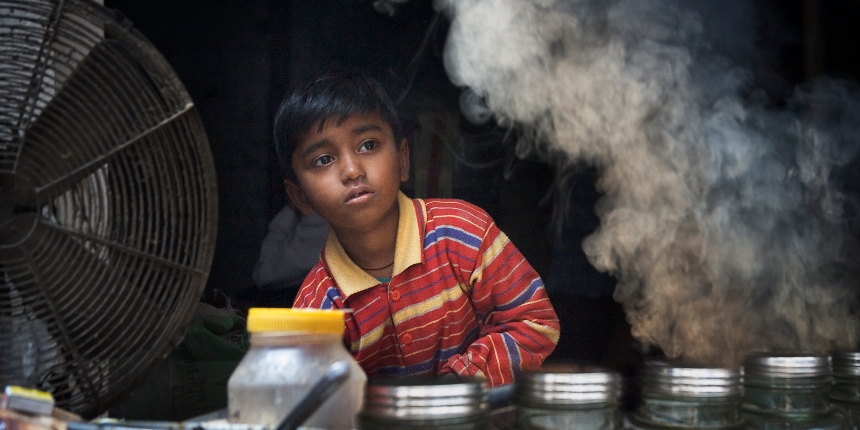Muslim students more likely to drop out at elementary level: UDISE Plus analysis
Atul Krishna | November 14, 2023 | 01:00 PM IST | 3 mins read
Muslim Education in India: Only 76.37% of Muslim students continue after elementary school as compared to the national average of 81.2%.

NEW DELHI: Muslim students are more likely to drop out of school at the elementary level (Classes 1 to 8) than all communities taken together, shows an analysis of the Unified District Information System for Education Plus (UDISE Plus).
The UDISE Plus data is published by the education ministry and contains a brief analysis of school education at the all-India level and also state-specific statements for all states and Union Territories.
An analysis of the UDISE Plus (also, UDISE+) 2021-22 data, titled State of Muslim Education in India, by educationist Arun C Mehta found that only 76.37% of Muslim students continue to the next level of education after the elementary level as compared to the national average of 81.2%. Mehta was at the helm of the DISE project while it was managed by the Nation Institute of Educational Planning and Administration (NIEPA), from 2002 to 2017-18. Since then, it has been handled by the ministry of education.
Also Read | ‘About 38 lakh children dropped out from Classes 1-8 between 2020-21 and 2021-22’
UDISE Plus: Low retention among Muslim girls
The analysis found that the retention rate, already low for Muslims, is lower still for Muslim girls as only 72.78% stay in school compared to 80.23% of Muslim boys.
School Education: Retention rates
Group | Retention Rate at elementary level |
Overall Girls | 82.1 |
Overall Boys | 80.5 |
Muslim Girls | 72.78 |
Muslim Boys | 80.23 |
“Overall, girls demonstrated higher retention rates at primary and elementary levels, showcasing their educational commitment. However, there is a concerning trend among Muslim students, where female retention rates were notably lower. Addressing this gender disparity is crucial for fostering equal education opportunities,” Mehta’s report said.
The analysis also revealed that except at the primary level, more Muslim girls are enrolled in schools than boys at all other levels. It showed that there is a greater gender parity when it comes to enrolment among the Muslim population as compared to the national average.
Enrolment: Greater gender parity among Muslims
The analysis showed that the Gender Parity Index (GPI) for Muslim girls is above 1 at upper primary, secondary, and higher secondary levels which indicates that more girls are enrolled than boys. Moreover, the national total GPI is only 0.93 compared to 0.99 among Muslim population.
Gender Parity Index: School education
Education level | Muslims | Overall |
Classes 1-5 | 0.95 | 0.92 |
Classes 6-8 | 1.01 | 0.94 |
Classes 9, 10 | 1.04 | 0.92 |
Classes 11 12 | 1.1 | 0.94 |
Total | 0.99 | 0.93 |
A GPI score less than 1 means that there are more boys enrolled and a score greater than 1 means that there are more girls enrolled.
Also Read| Muslim, SC areas less likely to have government secondary schools: Study
In his analysis, Mehta also found that although more Muslim boys are enrolled at the primary level than Muslim girls, the dropout rates of boys are also higher than girls. At the primary level, 3.72% Muslim boys drop out compared to 3.22% girls. In consequence, although the retention rate is lower for Muslim girls compared to Muslim boys, there are still more Muslim girls studying at the upper primary, secondary and higher secondary level compared to Muslim boys. According to the analysis, Muslim girls account for 48.68% of all enrolled Muslim students at the primary level but the percentage of girls increases to 50.20% at the upper primary level, 50.91% at the secondary level and 52.42% at the higher secondary level.
“The data indicates that Muslim girls enroll in the education system, they are more likely to retain and progress from primary to upper primary and subsequent levels; this contrasts with boys, where even though more are enrolled in primary grades, their retention and transition to higher levels of education are not as consistent. This suggests that specific attention should also be given to addressing the barriers preventing boys from continuing their education beyond the primary level,” the analysis said.
There is also a faster increase in the number of girl students enrolling in higher education among the Muslim population as compared to the national picture, it said.
“This trend indicates a growing interest and determination among female Muslim students to pursue higher education, showcasing the positive impact of efforts to promote gender equality and inclusivity in the education system,” it said.
Follow us for the latest education news on colleges and universities, admission, courses, exams, research, education policies, study abroad and more..
To get in touch, write to us at news@careers360.com.